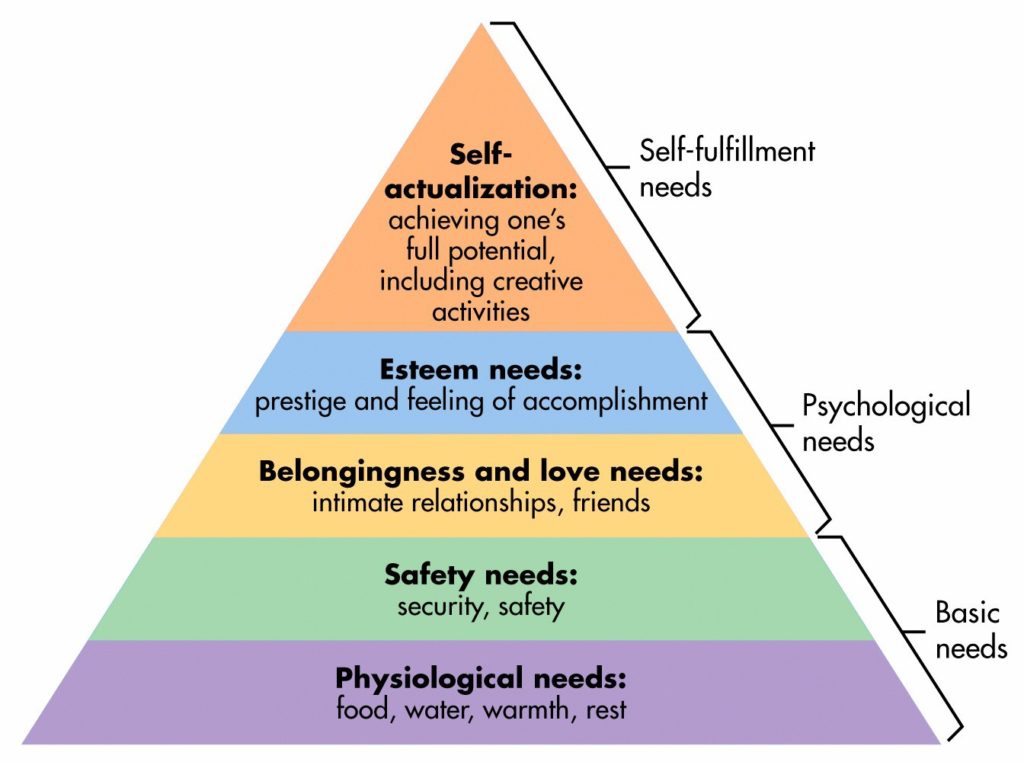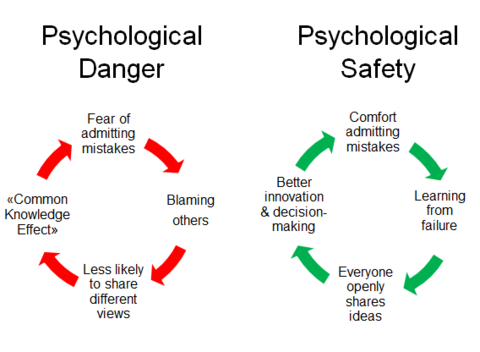Even as businesses recognize the value of creativity (73% believe it increases a company’s likelihood for financial success), leaders struggle to foster creativity (61% of leaders don’t believe their company is very creative).
There is a gap between knowing what’s important to our success and actually doing something about it. It’s not as simple as leaders telling their people to be more creative. You first have to remove the threats to creativity.
To paraphrase FDR, I believe the biggest threat to creativity is threat itself.

You’ve probably seen Maslow’s Hierarchy of Needs many times before. Have you noticed what is at the top of this pyramid? Self-actualization is where we achieve our potential, including our creative potential. The basis of Maslow’s theory is that each level of need builds upon more basic needs. We can’t feel safe without our physical needs (food, water, shelter, sleep) being met first.
Most of us have our basic needs (safety and physiological) met. But in order for us to be creative, it is just as important for our psychological needs to be met. If we lack confidence or a sense of belonging, then our creativity will suffer.
This emphasizes the importance for leaders to create environments where employees trust one another and do not feel threatened. Google agrees with Maslow.
Google agrees with Maslow.
Two years of research by Google identified psychological safety as the only distinction between innovative and non-innovative teams.

Source: World Economic Forum
When there is a sense that everyone is on trial, people are less likely to bring their full selves to work. In the name of self-protection, they will lay low, agree and try to maintain team harmony at all costs.
…
In contrast to focusing on blame, psychologically safe environments embrace mistakes and treat failure as learning. One surprising way to do this is for managers to show gratitude for the work and effort invested, regardless of a negative outcome.
One way global design and innovation leader IDEO fosters creativity is through rituals. Their tea-time ritual created a routine time each week for employees to stop isolated work and gather together. This break not only creates momentary interactions where creative collisions occur, but it also fosters a greater sense of connection and community. This helps meet the psychological needs of employees so they have the stability necessary to reach their creative potential.
Does your work environment create psychological safety and belonging?
What rituals could you begin to help foster creativity in your company… and yourself?
